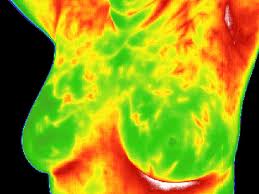 The U.S. Food and Drug Administration (FDA) has approved the first 3-D mammography imaging system that may boost accuracy in breast cancer detection and diagnosis.
The U.S. Food and Drug Administration (FDA) has approved the first 3-D mammography imaging system that may boost accuracy in breast cancer detection and diagnosis.
A mammogram is a safe, low-dose X-ray of the breast that is the best tool for early detection of breast cancer. However, with the limitations of conventional two-dimensional (2-D) imaging, about 10 percent of women undergo additional testing after the initial screening exam for abnormalities that are later determined to be noncancerous.
The Selenia Dimensions System, an upgrade to Hologic’s existing FDA-approved 2-D system, can provide 2-D and 3-D X-ray images of the breasts. The 3-D images may help physicians more accurately detect and diagnose breast cancer.
“Physicians can now access this unique and innovative 3-D technology that could significantly enhance existing diagnosis and treatment approaches,” said Jeffrey Shuren, M.D., J.D., director of the FDA’s Center for Devices and Radiological Health.
The National Cancer Institute recommends women ages 40 and older have a mammogram every one to two years. Nearly 40 million mammograms are performed each year in the United States.
As part of the approval process, the FDA reviewed results from two studies where board-certified radiologists were asked to review 2-D and 3-D images from more than 300 mammography exams. In both studies, radiologists viewing both the 2-D and 3-D images obtained a 7 percent improvement in their ability to distinguish between cancerous and non-cancerous cases as compared to viewing 2-D images alone.
While the combination of the Selenia’s 2-D and 3-D images approximately doubled the radiation dose the patient received, it improved the accuracy with which radiologists detected cancers, decreasing the number of women recalled for a diagnostic workup. There is uncertainty for radiation risk estimates; however, the increase in cancer risk from having both a 2-D and 3-D exam is expected to be less than 1.5 percent compared to the natural cancer incidence, and less than 1 percent compared to the risk from conventional 2-D mammography.
The Mammography Quality Standards Act requires that all health care professionals obtain eight hours of training prior to using new mammography technology on patients. The FDA also requires that the manufacturer provide each facility with a manual clearly defining the tests required for initial, periodic, and yearly quality control measures.
According to the NCI, nearly 200,000 women will be diagnosed with breast cancer this year. And 1 in 8 women will be diagnosed with breast cancer during their lifetime. There is a 98 percent survival rate when breast cancer is detected early and still localized to the breast.
 Today, June 2, 2011, the U.S. Food and Drug Administration (FDA) warned women not to substitute breast thermography for mammography to screen for breast cancer. Some health care providers are promoting breast thermography on their websites and claiming that thermography is superior to mammography as a screening method for breast cancer, because it does not require radiation exposure or breast compression.
Today, June 2, 2011, the U.S. Food and Drug Administration (FDA) warned women not to substitute breast thermography for mammography to screen for breast cancer. Some health care providers are promoting breast thermography on their websites and claiming that thermography is superior to mammography as a screening method for breast cancer, because it does not require radiation exposure or breast compression.
 The U.S. Food and Drug Administration (FDA) has approved the first 3-D mammography imaging system that may boost accuracy in breast cancer detection and diagnosis.
The U.S. Food and Drug Administration (FDA) has approved the first 3-D mammography imaging system that may boost accuracy in breast cancer detection and diagnosis.